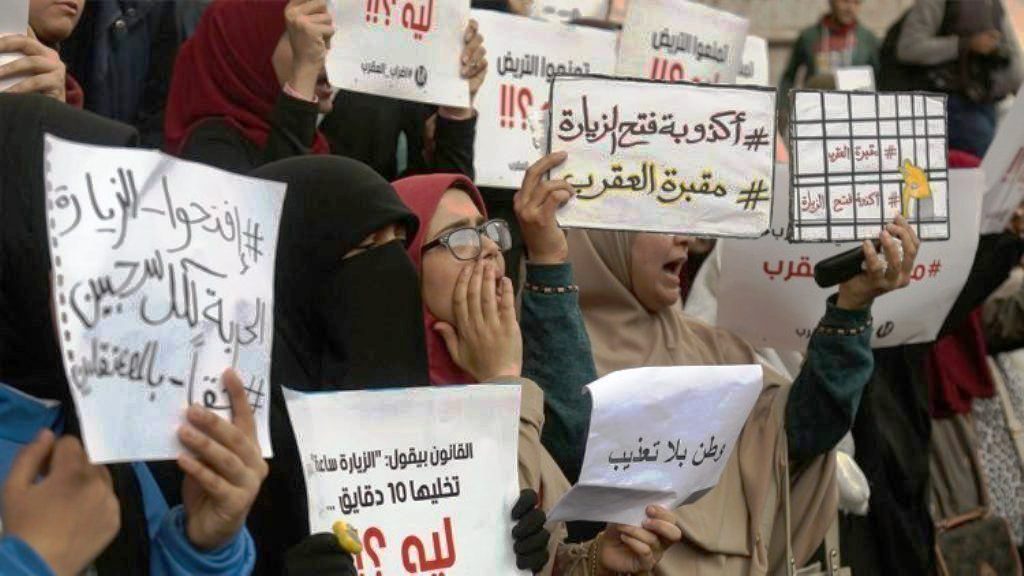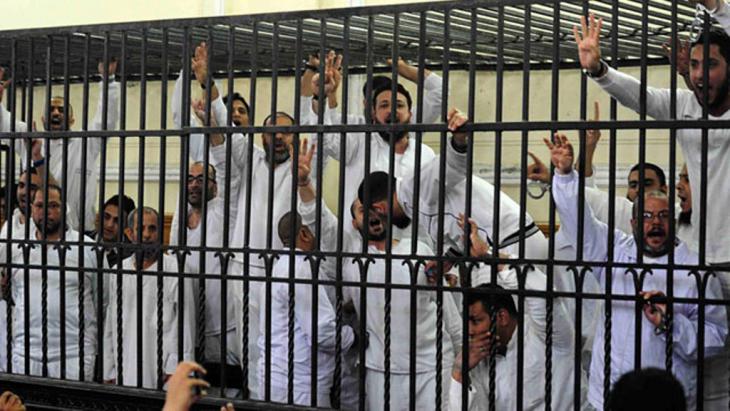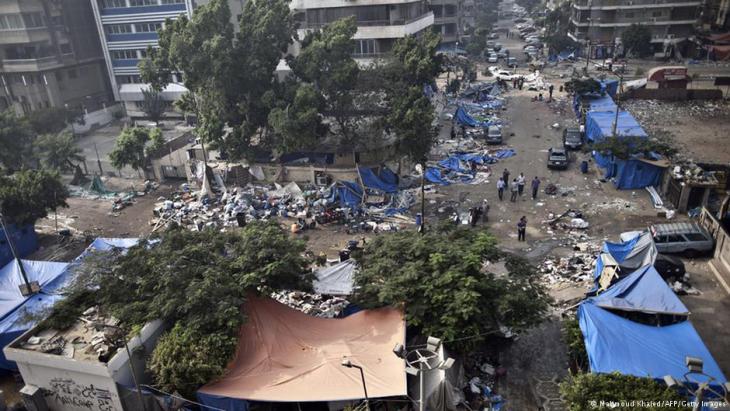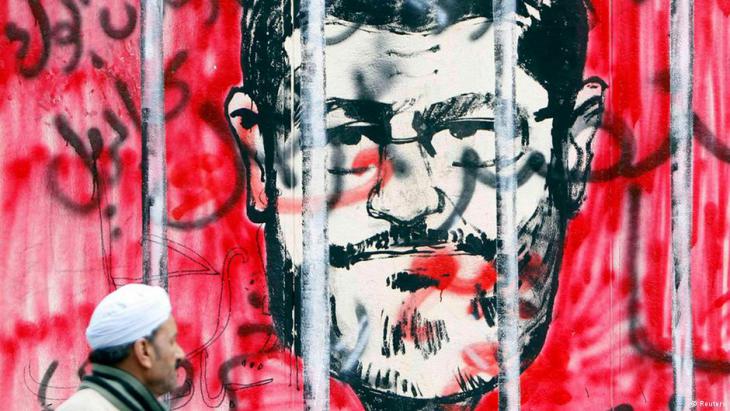From inmate to jihadist

19-year-old Mahmoud Shafiq was arrested in 2013 with books under his arm on the way to school. He had made the mistake of running past a demonstration by the Muslim Brotherhood. After a year of preventive detention, he was released – an utterly changed young man. On 11 December 2016, he blew himself up in the midst of worshippers at the St. Peter and St. Paul Church in Cairo, killing 26 people.
While Mahmoud was in custody, the public prosecutor dropped the charges alleging that he was a member of a banned terrorist organisation (the official term for the Muslim Brotherhood) and in possession of weapons and explosives. But he was nonetheless sentenced to two years of imprisonment for participating in demonstrations. By then, however, he had already left home and proceeded to go into hiding for two years rather than face more prison time. According to security forces, he reached the Sinai and joined the terrorist militia Islamic State.
Mahmoud's father, who died several years ago, was an officer in the Egyptian Army. It is therefore assumed that the young man was not radicalised until he ended up in prison and was subjected to brutal torture. There is no conclusive evidence that he was actually the Cairo attacker. Although the IS took responsibility for the bombing in a video, they named a different alias than the one determined by the Egyptian authorities.
Nevertheless, the tragedy has now triggered a public debate on the radicalisation of youth in Egyptian prisons. The danger is steadily increasing, especially as the IS has stepped up its recruitment activities in correctional facilities.
Not only Islamists are in the government's crosshairs
More and more young opposition members of every persuasion are being arrested in Egypt. The statistics supplied to Qantara.de by the Egyptian Co-ordination for Rights and Freedoms are staggering: in 2013 more than 8,435 people were arrested and in 2014 the number had exploded to 32,718. Arrests dropped somewhat again in 2015 to about 23,000 and the first half of 2016 saw 3,209 such cases. Overall, a total of 64,000 people have thus been arrested, of whom only some 20,000 were later released.

Since Morsi was removed from office, the Egyptian state has ordered the construction of 16 new prisons. Some have already officially opened, while others are still under construction. The most notorious of them all, where the IS has also stepped up its activities, are the high-security prison Al-Aqrab as well as Istikbal Tora and Burj al-Arab. In Istikbal Tora alone, at least 30 prisoners had joined the terrorist organisation by the time Ahmad, who was accused of co-operating with the Muslim Brotherhood, was released in mid-2015. The oldest among them had not yet turned 35.
Abuse and isolation: a recipe for radicalisation
Former inmates from several prisons estimate the chances of radicalisation as being highest at Al-Aqrab. Brutal torture methods used there along with violent hazing make it much easier for inmates to see joining the IS as their salvation. Further exacerbating the situation are complete isolation from the outside world and months-long bans on visits. The IS recruitment rate can usually be correlated with the severity of abuse, the prisoner's own tolerance level and the fellow-inmates he comes into contact with.
Initially, the central prison authority pursued a strict isolation policy in terrorism cases. The Al-Aqrab high-security prison was thus intended exclusively for inmates suspected of co-operation with organisations such as Ansar Bait al-Maqdis (renamed Wilayat Sinai since it made common cause with the IS in November 2014), Ajnad Misr or the Muslim Brotherhood. Over time, however – and faced with a steady rise in such cases – this strict division could no longer be maintained.

Ahmad, 35 years old and a former prisoner, doctor and one of the leaders of the Muslim Brotherhood, currently lives in an Asian country. While in prison, he witnessed preparations being made for housing terrorism suspects. At the end of 2014, the administration in Istikbal Tora decided to clear out 7 cells in Tract A (which form a "quarter"). Ahmad says that the prison guards mistreated the inmates during the move and then distributed them among other cells that were already full. In the now-empty quarter, security measures were implemented for accommodation of supporters of the IS and other organisations being relocated from Al-Aqrab.
Hymns of death
"After the IS members arrived, the mood in the tract changed," recounts Ahmad. "They called people to prayer after the entire tract had already prayed and branded everyone else as heretics. Every night, Wilayat Sinai battle songs rang out through the prison."
Ahmad was incredulous at how the management simply tolerated this behaviour. "When we dared to call out the simplest slogans such as 'Down with the military government!' or 'The Interior Ministry is a gang of thugs', the prison management went insane. Each time, all hell would break loose in the tract. But the same people couldn't care less about the battle songs of the IS, which incited people to do one thing only: 'Blow up and destroy'... One song went: 'It is time! It is time! With sword and Koran we assure our Caliph in full awareness: Oh, Abu Bakr, even if you send us into a sea of death, we will not waver!'"Muhammad, 22 years old and not politically active, was released in 2015. He tells of a fellow prisoner in Istikbal Tora who was a student in engineering. He had nothing to do with politics until a friend was killed in a demonstration after the opposition camps were cleared from Rabia al-Adawiyya Square. After that, he went to his first demonstration, was arrested and held in preventive custody.
To Muhammad's consternation, the student changed completely while in prison: "When he first came to prison, he smoked, didn't pray and knew lots of girls. His visitors were usually former girlfriends. Some fellow-prisoners reprimanded him and lectured him on what is forbidden and what is acceptable. So he began to follow the rules. He ended all his relationships with girls, stopped smoking and grew out his hair and beard. He no longer ate the meat served in prison and made a vow of loyalty to Al-Baghdadi."
Imaginary stories of glorious conquests
Muhammad says that the student no longer wished to speak to him or share meals with him. He told Muhammad that he was no longer allowed to receive anything from him, because after being released they would only find themselves on two hostile sides of a battle. "Are we not all Muslims?" asked Muhammad, taken aback. No, said his former friend, he was an apostate.

According to Muhammad, IS hangers-on boast of great victories in the northern Sinai, Libya, Syria and Iraq – music to the ears of desperate, frustrated young men. Such talk stimulates their imagination. They fancy that the legendary Redeemer has come, that the divinely guided Caliphate is here to save them. Particularly after brutal torture, it is easier for men to come to see the IS as the highest role model to aspire to. Shutting out the outside world and a lack of information lend some credibility to the imaginary stories of glorious conquests.
Muhammad also believes that many young men do not consider the IS a terrorist organisation. Instead, they see it as a key to their own liberation, especially once they have completely lost faith in the justice system.
Another former prisoner, Hamed, who was released early this year from Istikbal Tora and did not want to give his real name, claims that apolitical inmates are bullied by the others. The bullies are everywhere – among the Muslim Brotherhood, the liberals, the leftists, the Hazimun followers as well as the IS supporters. Hamed himself was a member of the Muslim Brotherhood but has turned away from their doctrines. He no longer thinks that they are handling the fight against the "coup government" in the right way. Violent ideologies have become much more congenial to him, although he does not want to join the IS.
The Muslim Brothers – heretics of a common faith
The IS has officially maligned the Muslim Brotherhood on several occasions. It's not possible to call for jihad and death in the name of democracy, they say. Even the speaker of the IS, Abu Muhammad al-Adnani, derided the organisation in his speech titled "Peacefulness Is the Religion of Whom?". He held the address after the eviction of the protest camps on Rabia al-Adawiyya Square, during which at least 800 people were killed.
Al-Adnani said: "It is time for us to recognise and acknowledge that peacefulness does not achieve what is right, or invalidate what is wrong. It is time for the advocates of the peaceful approach to stop with the false claims, for the people of unbelief kufr will never be peaceful with the people of belief and the belief of an unarmed peaceful person cannot stand in the face of the unbelief of a criminal armed aggressor. … The [Muslim] Brotherhood is nothing but a secular party in an Islamic cloak … They are a party that worships 'seats' and parliaments ..."

Has nothing been learned from the past?
That prisons can become breeding grounds for terrorism is nothing new. What happened in the era of Abdel Nasser and Anwar Sadat is being repeated today before our very eyes. In the 1960s, jihadists, in particular followers of Shukri Mustafa, recruited new members in the correctional facilities. Sayyid Qutb wrote most of his works while in jail.
Radical ideologies then flourished in the 1970s, until the Egyptian state resolved in 1976 to take brutal recourse against their preachers. The leaders of the Al-Takfir wa al-Hijra group were executed, including Shukri Mustafa himself. In the 1980s and 90s, groups such as Al-Tawaqquf wa al-Tabayyun and the followers of Shawqi al-Shaykh carried on their doctrines.
Current conditions in the Egyptian prisons are causing the situation to become even more critical. Reforms are urgently needed, especially in how inmates are treated. Torture and humiliation play right into the hands of extremist organisations. And denying inmates any contact with religious scholars further contributes to this dangerous development. A former convict says that during the 1.5 years he spent at Istikbal Tora he did not once have a chance to speak with teachers from the Al-Azhar Mosque about the confusing issues of the day. The IS thus has an easy time luring and persuading desperate and frustrated youth that anything but violence and armed struggle is futile.
Mustafa Abduh
© Qantara.de 2017
Translated from the German by Jennifer Taylor